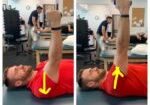How Diabetes Affects Carpal Tunnel Surgery Outcomes
Filed under Reviews, Uncategorized
Article review by Preston Lake
Moradi, A., Sadr, A., Ebrahimzadeh, M. H., Hassankhani, G. G., & Mehrad-Majd, H.
(2020). Does diabetes mellitus change the carpal tunnel release outcomes? Evidence from
a systematic review and meta-analysis. Journal of Hand Therapy, 33(3),
394–401. https://doi.org/10.1016/j.jht.2020.01.003
The Skinny:
The aim of this study was to systematically review the current available literature to characterize
the differences in the clinical, functional, and neurophysiological outcomes of surgical
decompression for diabetic and non-diabetic patients with Carpal Tunnel Syndrome (CTS). The
authors sought to clarify conflicting findings from prior studies on this topic.
In the Weeds:
This meta-analysis reviewed 10 articles meeting inclusion criteria and study relevance with 446
diabetic and 2423 non diabetic patients treated with surgical decompression for CTS. All studies
included in this review were cohorts with 2 being retrospective and 7 being prospective. The
mean age of diabetic patients was 57.8 and 54.8 for non-diabetic patients. All studies included
reported outcomes using Boston Carpal Tunnel Questionnaire (BCTQ), Quick disabilities of the
Arm, Shoulder, and Hand (QuickDASH) or with nerve conduction study. Furthermore, studies
were included only if patients underwent open or endoscopic surgical release with a 6-month
follow-up. All studies included in this review were cohorts with 2 being retrospective and 7
being prospective.

Key Findings
- There were no significant differences between non-diabetic and diabetic patients
for studies reporting outcomes using the Quick DASH and BCTQ - There were no significant differences between non-diabetic and diabetic patients
with motor conduction studies of the median and ulnar nerves - Non-diabetic patients had significantly better outcomes for sensory conduction in
both the wrist to palm segment and wrist to middle finger segments. - There was a slightly higher rate of surgical site wound infections for diabetic
patients, however findings were not statistically significant.
Bringing it Home:
The results of this study find equal benefits from CTS decompression surgery with regards to
symptoms and function following the procedure. The authors find that diabetic patients
undergoing CTS decompression surgery can expect the same clinical benefits to the procedure as patients without DM. It is pr oposed that the higher level of sensory dysfunction for diabetic
patient who underwent decompression surgery is associated with pre-existing diabetic
neuropathy.
Rating: 3/5
This was a high-level study design (meta-analysis) with inclusion of validated clinical outcome
measures and publication bias assessment. The authors presented a clear clinical question with an
easy to follow and errorless methodology section. This study was limited by its lack of
randomized controlled trials, short follow ups, and failure to account for diabetic neuropathy
impact on results.
More To Read
Article Review: Trapeziectomy and LRTI: What can patients with CMC osteoarthritis expect 12 months after the procedure?
Janakiramanan, N., Miles, O., Collon, S., Crammond, B., McCombe, D., & Tham, S. K. (2021). Functional Recovery Following Trapeziectomy and Ligament Reconstruction and Tendon Interposition (Trapeziectomy and LRTI): A Prospective Longitudinal Study. The Journal of hand surgery, S0363-5023(21)00304-X. Advance online publication. https://doi.org/10.1016/j.jhsa.2021.04.036 The skinny: Patients with trapeziometacarpal (TMC) osteoarthritis who are candidates for a trapeziectomy and…
Read MoreIncreasing Shoulder Range of Motion by improving Scapulohumeral Rhythm
Scapulohumeral rhythm is often the key component when treating shoulder conditions and the reason for the lack of total shoulder range of motion. This may also be a critical component in order to prevent shoulder conditions during rehabilitation of other upper extremity conditions such as distal radius fractures, tendon injuries, and elbow injuries. Scapulohumeral rhythm…
Read MoreHand Therapy as a New Grad or Student
Tips for Getting Prepared for hand therapy as a new grad or a Level II Fieldwork Everything you need to know in hand therapy starts with the upper extremity anatomy. Here is a quick checklist to review and hopefully help get you started in your new hand therapy setting. By: Tristany Hightower I suggest, as…
Read MoreA Review on the Conservative Management of Trigger Finger
Lunsford, D., Valdes, K., & Hengy, S. (2017). Conservative management of trigger finger: A systematic review. Journal of Hand Therapy, 32(2), 212-221. https://doi.org/10.1016/j.jht.2017.10.016 The Skinny The main purpose of the literature review was to determine the efficacy of conservative management of trigger finger (TF) through the use of an orthosis in addition to therapy. The review…
Read MoreSign-up to Get Updates Straight to Your Inbox!
Sign up with us and we will send you regular blog posts on everything hand therapy, notices every time we upload new videos and tutorials, along with handout, protocols, and other useful information.





